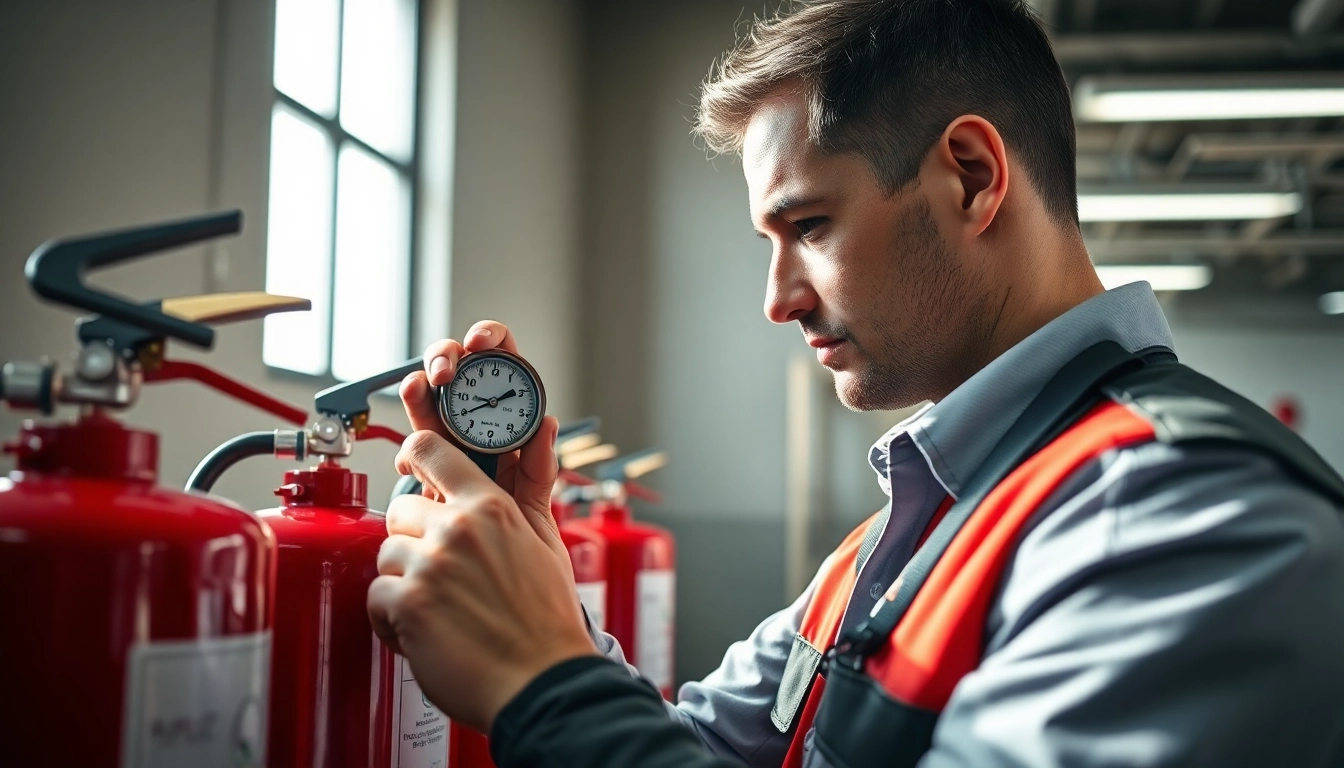Understanding Fire Extinguisher Checks
Fire extinguishers are crucial safety devices in residential, commercial, and industrial settings, acting as the first line of defense against fire outbreaks. Regular fire extinguisher checks are critical, not only for ensuring optimal performance but also for complying with legal and safety regulations. This article dives deep into the importance, protocols, issues, and best practices associated with fire extinguisher checks.
What Are Fire Extinguisher Checks?
Fire extinguisher checks involve a series of systematic evaluations aimed at ensuring that fire extinguishers are operational, accessible, and compliant with safety standards. These checks typically encompass both physical inspections and documentation reviews, ensuring that extinguishers are ready for immediate use when needed.
Importance of Regular Inspections
The importance of regular inspections cannot be overstated. Proper fire extinguisher maintenance plays a pivotal role in safeguarding lives and property. A malfunctioning fire extinguisher can lead to dire consequences, especially in emergencies. Regular checks serve several vital purposes:
- Ensuring functionality: An extinguisher must be fully operational to act effectively during a fire emergency.
- Identifying issues early: Regular inspections can detect leaks, corrosion, or malfunction before they become critical.
- Compliance with regulations: Many jurisdictions mandate routine inspections, ensuring safety standards are upheld.
- Peace of mind: Regular checks provide assurance to employees and occupants that they are protected in case of fire.
Legal Requirements and Compliance
Governments and fire safety organizations set specific regulations regarding the frequency and standards for fire extinguisher inspections. For example, the National Fire Protection Association (NFPA) recommends monthly visual inspections and annual professional inspections for all portable fire extinguishers. Compliance with these regulations is essential not just for safety but also to avoid potential legal repercussions and to maintain insurance coverage.
How to Conduct Fire Extinguisher Checks
Conducting fire extinguisher checks involves a systematic approach to both visual and functional inspections. Below are the primary procedures involved.
Monthly Visual Inspections
Monthly visual inspections are crucial for maintaining fire extinguisher functionality. These inspections should encompass the following elements:
- Accessibility: Ensure the extinguisher is easily reachable, unobstructed, and located in a designated area.
- Physical condition: Check for any visual signs of wear, such as dents, rust, or corrosion.
- Pressure gauge: The gauge should indicate that the extinguisher is charged and ready for use.
- Inspection tag: Verify that the most recent inspection tag is present and up-to-date.
- Seals and pins: Ensure that safety seals and pins are intact and have not been tampered with.
Annual Professional Inspections
In addition to monthly inspections, an annual professional inspection is mandated by safety regulations. Qualified personnel should perform these inspections thoroughly. The inspection process usually includes:
- Detailed examination: Comprehensive checks including discharge testing, functionality checks, and overall condition assessment.
- Recharging: If the extinguisher has been used or is found to be undercharged, it should be recharged appropriately.
- Maintenance records: Every inspection must be documented including any repairs or replacements made.
Documentation and Records Keeping
Proper documentation of all inspections and maintenance actions is essential for several reasons:
- Accountability: Keeping a record provides accountability for the individuals responsible for inspections.
- Proof of compliance: Documented records are necessary for regulatory compliance and during audits.
- Tracking issues: Historical data can help identify recurring problems and assist in managing maintenance schedules effectively.
Common Issues Found During Fire Extinguisher Checks
Through thorough inspections, certain common issues may arise that can hinder the effectiveness of fire extinguishers. Identifying these issues early can prevent dangerous situations during emergencies. Some of the most prevalent problems include:
Physical Condition of Extinguishers
The physical condition of the extinguisher is paramount. Common issues include:
- Dents and punctures: These can compromise the structural integrity of the extinguisher.
- Corrosion: Corrosion can lead to leaks and reduce the effectiveness of the extinguishing agent.
- Worn hoses or nozzles: Over time, hoses or nozzles can become brittle or malfunction, impacting the extinguisher’s operational capability.
Pressure Gauge Readings
The pressure gauge is a critical component of any fire extinguisher. Issues to monitor include:
- Low pressure: A gauge reading below the green zone indicates an undercharged extinguisher.
- High pressure: An excessively high reading can indicate a risk of rupture during use.
Accessibility and Placement
Accessibility is vital during emergencies. Ensure that:
- Obstruction-free: Extinguishers should be free of obstructions and positioned in easily accessible locations.
- Signage: Proper signage should direct occupants to extinguisher locations, ensuring visibility.
Best Practices for Fire Extinguisher Maintenance
Effective fire extinguisher maintenance is key to ensuring these devices perform optimally in an emergency. Here are several best practices:
Scheduled Maintenance Programs
Implementing scheduled maintenance for fire extinguishers ensures consistent checks and optimal performance. Developing a maintenance calendar that includes monthly visual inspections and annual professional inspections can help prioritize fire safety within an organization.
Training Staff on Inspection Procedures
Providing thorough training for staff on fire extinguisher checks promotes a culture of safety. Training should encompass:
- Identifying signs of damage: Staff should be knowledgeable about what to look for during inspections.
- Proper usage: Training should include instruction on how and when to use a fire extinguisher in an emergency.
Updating Emergency Plans and Protocols
Regularly revising emergency plans ensures that procedures align with current safety standards. Emergency response protocols should include:
- Detailed evacuation routes: Clearly marked routes can save valuable time during emergencies.
- Fire extinguisher locations: Ensure locations are noted in emergency plans, providing clarity for all occupants.
Resources for Fire Extinguisher Checks
Accessing comprehensive resources can greatly assist in effective fire extinguisher checks. Below are invaluable resources available to help manage fire safety:
Checklists and Guidelines
Utilizing checklists can streamline the inspection process, ensuring no crucial steps are overlooked. Sample templates can be found online, which can be adapted to fit specific organizational needs.
Professional Services and Certifications
Engaging professional services for inspections and training can enhance compliance and safety. Certified technicians can provide in-depth knowledge of current regulations and best practices. It’s beneficial to choose providers that offer flexible schedules to minimize business disruption.
Frequently Asked Questions
As organizations navigate fire extinguisher inspections, numerous questions often arise:
- How often should fire extinguishers be inspected? Monthly visual inspections and yearly professional inspections are generally recommended.
- What do I do if my fire extinguisher is low on pressure? It is essential to have it recharged or replaced immediately.
- Where should fire extinguishers be located? Extinguishers should be easily accessible and near potential fire hazards but not obstructed.














Leave a Reply